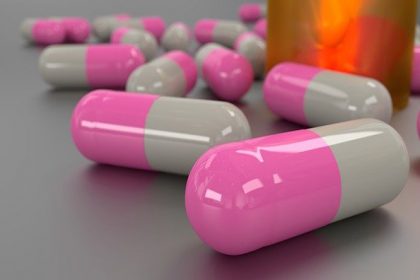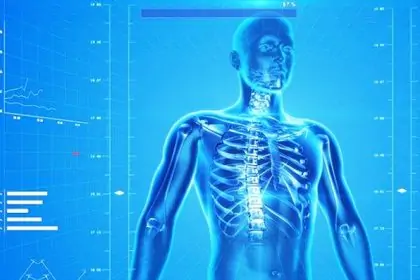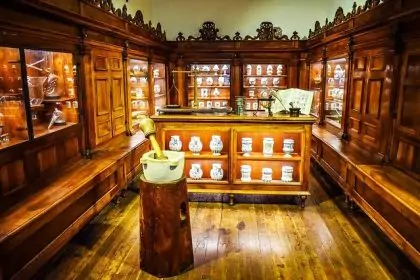Medicinal products, which are not specifically identifiable in the basic patent cannot be considered to be covered by its patent protection – although they fall under a functional definition of the patent claims, the BPatG ruled in the Royalty Pharma case in line with the ECJ.
 This is the ruling of the German Patent Court and follows the identical ruling of the highest European court (ECJ, C-650/17) of 30 April 2020.
This is the ruling of the German Patent Court and follows the identical ruling of the highest European court (ECJ, C-650/17) of 30 April 2020.
Although medicinal products need not be explicitly mentioned in the patent claims, in any case the person skilled in the art must be able to identify the medicinal product in the light of all information disclosed by the patent according to the state of the art at the date of filing or priority date of the patent, the BPatG explained its decision in agreement with the ECJ.
However, it is difficult to meet this condition if the product did not exist at the date of filing or at the date of priority, because the fact that a product corresponds to a functional definition of a class of active substances (according to the claims of the basic patent) is not sufficient to extend the patent protection of the basic patent to that product.
This is a problem for traditional and innovative pharmaceutical manufacturers and opens the door for generic producers in Germany.
Facts of the case
The case specifically concerned a drug manufactured by Royalty Pharma to lower blood sugar levels (diabetes mellitus), specifically by administering DP-IV inhibitors. Royalty Pharma had successfully applied for a European patent in 1997 (European Patent (DE) EP 1 084 705) which included claims relating to the functional definition of “DPIV inhibitors”. In this basic patent, three DPIV inhibitors were specifically disclosed and the use of all other DPIV inhibitors already known or yet to be developed was claimed.
It was only after this that a licensee of Royalty Pharma developed the specific DPIV inhibitor called sitagliptin; the licensee secured patent protection as a substance patent for sitagliptin. Royalty Pharma in turn applied for a supplementary protection certificate (SPC (German: ESZ)) for sitagliptin at the German Patent and Trademark Office (DPMA) in 2014 – on the basis of its basic patent.
The DPMA rejected this application for the SPC on the grounds that the product covered by the application (i.e. sitagliptin) was not specifically disclosed in the basic patent, but that this was required under Article 3(a) of Regulation (EC) No 469/2009.
Royalty Pharma appealed against that decision, as a result of which the case was also referred to the ECJ for a preliminary ruling. Now, the German Federal Patent Court has also ruled (14 W (pat) 12/17).
BPatG rejected the appeal of Royalty Pharma
Royalty Pharma claimed that the subject-matter of the basic patent included not only the use of the three DPIV inhibitors specifically disclosed, but also the use of all other DPIV inhibitors already known or yet to be developed, such as sitagliptin. Furthermore, it is not necessary to indicate the chemical name or the structure of the protected substance in order to claim a basic patent.
However, the BPatG rejected that objection. It is true that a product may be protected by a basic patent in force if it corresponds to a general functional definition used in one of the claims of the basic patent, even without being individually disclosed, the BPatG conceded. That is the case here.
It is, however, a cumulative condition that in such a case the product must nevertheless be specifically identifiable by a person skilled in the art, and this is also how the ECJ interpreted Article 3 (a) of Regulation (EC) No 469/2009. The BPatG ruled that this criterion was not met in the present case, as a person skilled in the art had lacked the necessary information.
This could in no way be compensated for by the fact that the product falls under the functional definition of DPIV inhibitors, the BPatG ruled.
Two test questions – cumulative
According to the BPatG, whether the cumulative conditions are fulfilled can easily be determined by means of two test questions.
The first test question is: “Does the product correspond to a functional definition as used in one of the claims of the basic patent? The question: “If the product is made available to a person skilled in the art, can he see that it falls within the functional definition of the basic patent?” also reflects this first test question.
However, patent protection can only be granted if the second test question is also answered in the same way: “Taking into account the information disclosed by the patent, is the product specifically identifiable to the person skilled in the art on the priority date? The BPatG ruled that this criterion from the second test question was not met in the present case and rejected the appeal in its entirety.
A ruling of the Federal Court of Justice (BGH) of 2013 (X ZB 8/12), also issued on DPIV inhibitors, did not contradict this either, the BPatG stated. There, too, a sufficient description is required if only a functional definition is used in the patent claims.
A judgement with relevance to the decision?
In fact, it would be interesting to see how the BGH would assess this case in the light of the ECJ ruling. For in its ruling of 2013 (X ZB 8/12), the BGH had emphasised that the claim for protection was not limited to concrete forms of implementation but that certain generalisations were allowed. In such a case, a medicinal product must appear to a skilled person as the most general form according to technical teaching, taking into account the description and the examples of implementation contained therein.
This could then also lead to the fact that a claim for use could also include the use of substances which are only made available in the future, the BGH had explicitly ruled in 2013 as a guiding principle decision. The ECJ, on the other hand, decided on 30 April 2020 that future products cannot be covered by a basic patent if they are developed by independent inventive step.
Accordingly, it is not surprising that the plaintiff applied for a legal appeal to the German Federal Supreme Court (BGH) because of the relevance of this decision (§ 100 PatG). However, this was very clearly rejected by the BPatG. All legal questions actually relevant for the decision of the appeal case had already been clarified by the highest court, the BPatG stated, referring to the political will. The political will is not to promote all pharmaceutical research, but only that which leads to the first placing on the market of an active substance or a combination of active substances as a medicinal product.
It is therefore open whether this case will still be submitted to the German Federal Supreme Court; such an appeal could in any case not relate to the relevance of the decision.
Patent protection in the field of pharmaceuticals and SPC granting – also an issue for you?
Our patent attorneys and attorneys at law have expertise in all fields of intellectual property law, both nationally and internationally.
We would also be pleased to represent you before the offices and in court. We are entitled to represent you before any court in Germany and also internationally.
We are looking forward to the contact with you!
Sources:
Judgement of (BPatG) 14 W (pat) 12/17
Judgement of BGH von 2013, X ZB 8/12
Image:
phoenixwil | pixabay.com | CCO License








Leave a Reply